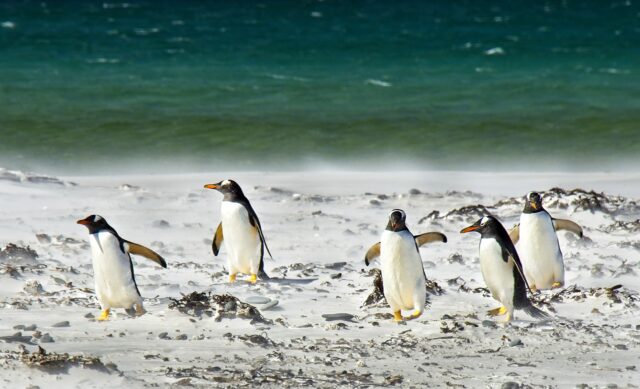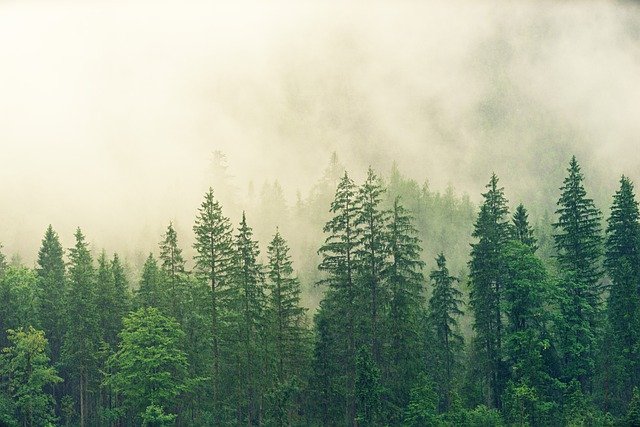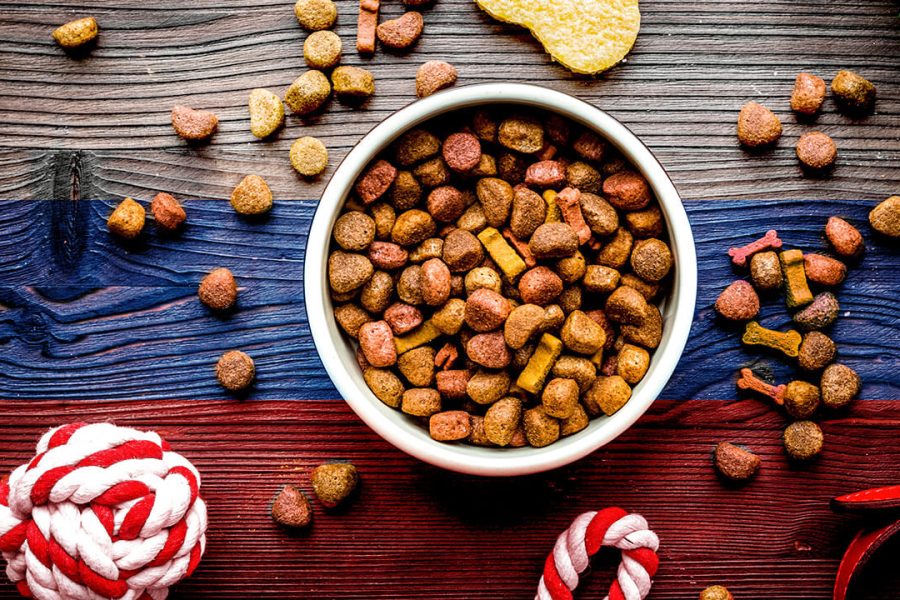The world is full of terrifying and dangerous beasts, from lions to great white sharks to black mambas. Nature is designed to kill, one way or another. So it's a relief to know that many creatures are innocent, harmless, and even friendly, right? Of course it is. Except when these seemingly harmless creatures have terribly dangerous relatives.
10. Oyster mushrooms are carnivorous
What could be less harmful than a mushroom? Well, except for all the deadly ones. But the deadly ones usually come with the catch. You can't usually die from a mushroom unless you eat the mushroom. That's why you should never pick mushrooms unless you know what you're doing. However, the oyster mushroom is a beast of a different color, meaning yes, it is a mushroom, but it is also carnivorous.
While they may not be as intimidating or agile as some carnivores, oyster mushrooms are still capable of attack and paralyze nematodes , these tiny parasitic worms, before devouring them.
When a nematode gets too close to the fungus, tiny hair-like fibers paralyze the worm and the toxin kills it. The tiny threads then penetrate the nematode's corpse, and the insides dissolve. and are absorbed mushroom. Strictly speaking, if you are a true vegan, as a result you probably shouldn't eat oyster mushrooms.
9. Carnivorous sponges
Speaking of predators, if there's one creature in the entire world that you don't think would dare stalk and kill any prey, it's the sponge. People generally know two things about sponges: they absorb moisture and sometimes wear square pants. However, they're not scary.
Deep in the ocean, at a depth of about 10,000 feet , you will find Chondrocladia lyra , also known as the harp sponge. It looks like a candelabra and may actually be less intimidating than your average sponge. Even so, while it sits looking fragile on the ocean floor, its long, thin arms are hard at work devouring its prey.
As ocean currents move tiny life forms and crustaceans, they become trapped in the sponge's arms by tiny hooks. Once they are trapped, the sponge begins to form a membrane over them and digest them. This is just one of several related species discovered that can catch and eat live prey, unlike most sponges, which simply filter bacteria from the ocean floor.
8. Giant prehistoric penguins

Few animals are as charming and quirky as the penguin. Entire films have been made about them, waddling about their business, raising little penguins, and trying not to get eaten by seals. And we are lucky to be able to enjoy them here and now, because the penguin was once a fearsome beast.
Back in 2006, some schoolchildren in New Zealand stumbled upon the fossilized remains of a bird that was significantly larger than most other birds in the area. The fossils, dating back to about 30 million years ago, belonged to a prehistoric species of penguin called Kairuku waewaroa , which reached 4.5 feet in height.
These ancient birds had much longer legs , than modern penguins, as well as long, spear-like beaks, and as a result, they probably moved much faster. So try to imagine a modern penguin the size of a short person, able to chase you at human speed, and you might get an idea of what it was like.
7. Pine trees team up with fungus to eat beetles

Pine trees are known for a few things. They make very good Christmas trees; they produce both cones and nuts, and the pine scent can work as a car air freshener in a pinch. That's more of a claim to fame than most trees. But it doesn't stop there. These stationary, mindless organisms also shame other trees by occasionally forming a symbiotic relationship with fungus, allowing them to create a web of death so they can kill and devour insects that venture too close.
The eastern white pine, which can grow to more than 200 feet tall, forms a relationship with a fungus called bicolor a deceiver. The fungi cover the roots of the pine tree with a mycorrhizal membrane that allows the fungus to steal some of the sugar produced by the tree during photosynthesis. In return, the fungus kills tiny insects, found in the soil, and then absorbs the nutrients from their bodies, sharing some with the pine trees. The tree gets some nitrogen from the insect carcasses, and the entire area remains relatively bug-free, in case you're ever looking for a camping spot that's less creepy than some others.
6. Kea parrots eat sheep alive

Parrots are mostly known for their longevity and tendency to pick up a few swear words, making them some of the funniest pets you can have. But it’s not all 100-year-old curse holidays. Some of these birds are more dangerous than they look. Take the New Zealand kea, for example. These dark green birds grow up to a foot and a half long and weigh just a pound, and have historically been hated by farmers for eating sheep.
The birds were captured on camera in 1992, when they would sit on the back of a sheep, bite into its flesh, tear off chunks and eat the animal alive. Farmers have been telling stories about this happening for years, but most people don't believe them, because why would they?
For many years it was assumed that birds eat things like fruits and berries, until someone took the time to point out that where the birds live in the mountains, there are simply no fruits or berries in the winter, so they have to eat something else. In this case, sheep.
5. Giant newt snails hunt poisonous starfish
You could make a good case that snails are the least scary creatures in the world. They're ridiculously slow, they have no bones, teeth or limbs, and they can be killed with salt. There aren't nearly enough of them to make them particularly scary. But that's just your average garden snail.
Giant newt snails live along the Great Barrier Reef and grow up to two feet long . They feed crown of thorns starfish , which are known to overwhelm reefs, making them very useful monsters of the deep. However, they are quite opportunistic predators and will eat almost anything they can find, regardless of whether it is poisonous.
The snails themselves are poisonous, the saliva they produce paralyzes their prey so that it will sit motionless while the snail cuts it open with a mouth tube with teeth, and then sucks out the soft insides.
4. Prehistoric guinea pigs were the size of a buffalo.

Have you ever wondered how many guinea pigs there are in the world? Well, someone has, and at least one group of guinea pig enthusiasts has guessed that the number is around 30 million . They make pet care easier, don't take up much space, and depending on where you live, they're also quite popular as food But this is the common pig that we all know, which weighs between 0.5 and 1.5 kilograms and rarely reaches a length of more than 30 centimeters.
Go back in time about three million years ago and you can find Josephoartigasia monesi, a prehistoric relative of modern guinea pigs that weighed 100 kilograms and grew to the size of buffalo . Just like his cousin. Phoberomys pattersonii , this giant rodent would have had a long tail for balance and large incisors that could deliver a devastating bite. Based on reconstructions of the animal's skull, researchers estimate that its overall bite force was similar to that of a tiger, but the force generated by its prominent front teeth was three times greater.
3. Vampire moths eat blood
Most of us have little interaction with moths. They might try to eat your clothes in the closet or bounce off the porch light on a summer evening, but that's about it. These are nature's less interesting butterflies.
In their larval stage, moths actually eat your clothes, which can be a major nuisance. But like butterflies, when they turn into the winged creatures you recognize, they feed entirely on liquid food, meaning your wardrobe is safe. However, you may be next on the menu depending on the moth.
Insects known as vampire moths, such as Calyptra thalictri, feed on blood and are willing to take it from humans. Most bloodsucking are found in Europe, Africa, and Asia, but they have relatives in North America that have not been observed eating living creatures. In fact, in this family 17 species , but only 8 of them consume blood, and only two have crossed over into humans. Of course, two is probably two more than most people would like.
The tiny beetles are surprisingly good at what they do, and can even pierce thick elephant skin simply by moving their straw-like proboscis back and forth until they reach the tasty blood, which they then suck until they are sated.
2. Loggerhead shrikes impale their prey with spikes
The loggerhead shrike can be found throughout North America, singing delightful songs and flitting through trees and meadows. They weigh between 30 and 50 grams and are generally smaller than a robin, with a plump body and hooked bill. They also hunt like Vlad the Impaler, spearing their prey into foreign objects in a grisly display of death and mayhem.
Because the shrike no claws, like a hawk or other bird of prey, they instead use natural spines or even barbed wire as weapons to impale their prey on spikes , then feeding on the impaled bodies at their leisure. If you ever see a barbed wire fence strewn with the impaled carcasses of other insects, lizards, and even small mammals, there's a good chance you're in the hunting grounds of a shrike.
1. White-tailed deer will eat meat and bones.

Few animals more embody the sweet and innocent side of nature than deer. Just look at Bambi, perhaps the epitome of gentle perfection. That's probably only because Walt Disney didn't know that white-tailed deer sometimes eat things like birds and human bones.
Back in 2015, a camera trap set up at the Forensic Anthropology Research Center in Texas captured an unusual sight. The research center is often referred to as a body farm. Bodies are donated to the center and left on the grounds to decompose for forensic scientists to study, which has greatly aided our understanding of death and crime solving by providing valuable information about how bodies decompose over time.
In this particular case, the camera was activated by a deer that came onto the 26-acre property and started munching. rib bone one of the corpses. It was assumed that he was trying to get some minerals from the bones, but perhaps that is why a cannibal would eat your bones, too.
Obviously, most deer have limited access to human carcasses, so this carnivorous moment must be rare, right? Not exactly. Without human prey, deer simply choose something smaller and easier to eat, like ground nesting birds As long as the food doesn't run away, the deer will eat it.













Оставить Комментарий